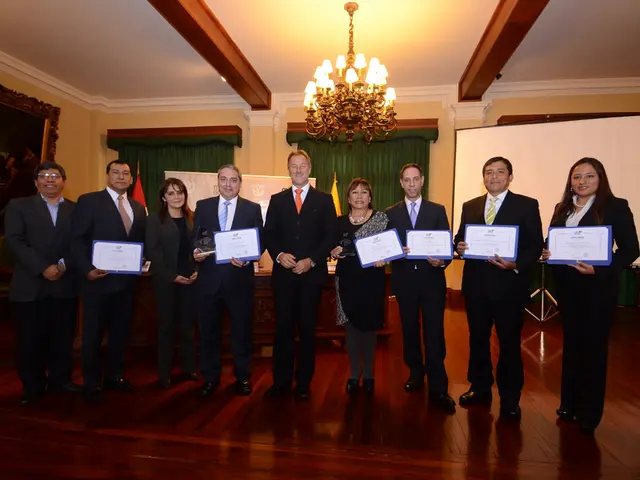Specialists Unravel Critical Movements Governing Brain's Transport System
Cellular Motor Proteins: Unraveling the Mystery of Dynein Activation
Scientists from the Salk Institute and UC San Diego have provided a detailed insight into the mechanism by which the motor protein dynein is activated by its partner Lis1. Their research, detailed in the journal Nature Structural & Molecular Biology, reveals 16 distinct structural stages in the activation process, offering potential avenues for developing targeted treatments for neurodevelopmental disorders associated with dynein or Lis1 dysfunction.
Every cell relies on intricate microscopic highways called microtubules and specialized protein vehicles, known as motor proteins, to transport various cellular goods, including organelles, proteins, and waste. The dysfunction of these proteins can lead to severe neurological disorders, such as lissencephaly – a fatal, rare birth defect characterized by a smooth brain surface.
The collaborative study sheds light on how Lis1 initiates dynein's activity by binding to its motor and stalk, transitioning it from an inactive "Phi" state to an active "Chi" state. Time-resolved cryo-electron microscopy was employed to capture the intricate process in unprecedented detail, revealing 16 structural stages in the dynein-Lis1 interaction.
The scientific team observed Lis1 interacting with dynein in a series of different 3D shapes, offering unique perspectives into the activation process. This newfound knowledge is essential for understanding the molecular steps leading to neurodevelopmental and neurodegenerative diseases linked to dynein or Lis1 dysfunction.
"I've always been fascinated by motor proteins," says co-corresponding author Agnieszka Kendrick, assistant professor at Salk. "The impressive tools we have in the lab now made it possible for us to create a movie of dynein and Lis1 interacting in real time. Having this detailed view of their stepwise partnership will help us find ways to restore their activity in neurodevelopmental and neurodegenerative diseases."
The researchers employed a yeast model for their experiments, as it allows for the survival of altered dynein and Lis1 levels, unlike human cells. In addition, dynein's structure remains functionally the same across yeast and human cells, ensuring the findings can be applied to humans.
The high-definition 3D movie captured at reduced temperatures depicted the intricate steps by which Lis1 activates dynein. In the first step, Lis1 attaches to dynein's motor subunit, relieving the protein of its initial locked state and turning its motor on by altering its shape for more efficient utilization of ATP – nature's energy molecule. The second Lis1 attachment on the stalk solidifies dynein's activated state, further increasing motor activity, preparing it for intracellular transport along microtubules.
This research could pave the way for designing therapeutics aimed at restoring dynein and Lis1 function in neurodevelopmental and neurodegenerative diseases. Future studies can explore how different mutations affect Lis1 interactions with dynein and contribute to lissencephaly and other rare genetic disorders.
The study's authors include researchers from UC San Diego, Salk, the Howard Hughes Medical Institute, and the University of Vermont. The work was funded by the American Cancer Society, National Institutes of Health, Cardiovascular Research Institute of Vermont, Jane Coffin Childs Postdoctoral Fellowship, and Howard Hughes Medical Institute.
Overall, the study reveals the intricate multi-step molecular mechanism by which Lis1 activates and powers up the motor protein dynein, offering hope for targeted therapeutic interventions in neurodevelopmental and neurodegenerative diseases linked to dynein or Lis1 dysfunction.
- The research provides insights into the activation process of dynein, a motor protein, which is associated with mental disorders like lissencephaly, a rare birth defect.
- Genetics plays a role in neurodevelopmental disorders, particularly those associated with dynein or Lis1 dysfunction, as demonstrated by this neuroscience study.
- As people age, neurological disorders like lissencephaly may become more prevalent due to potential dysfunctions in motor proteins like dynein, as observed in this neuroscience news.
- Understanding the activation mechanism of motor proteins, like dynein, can contribute to the health-and-wellness of individuals by developing targeted treatments for various medical-conditions, including neurological disorders.
- Further research is necessary to explore how different mutations could affect Lis1 interactions with dynein, potentially leading to lissencephaly and other rare genetic disorders, as mentioned in this neuroscience research.








